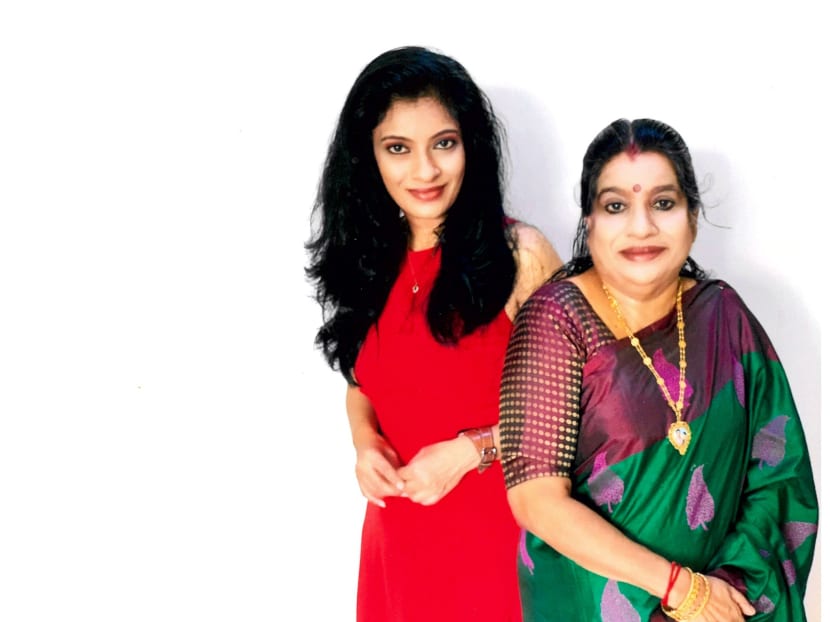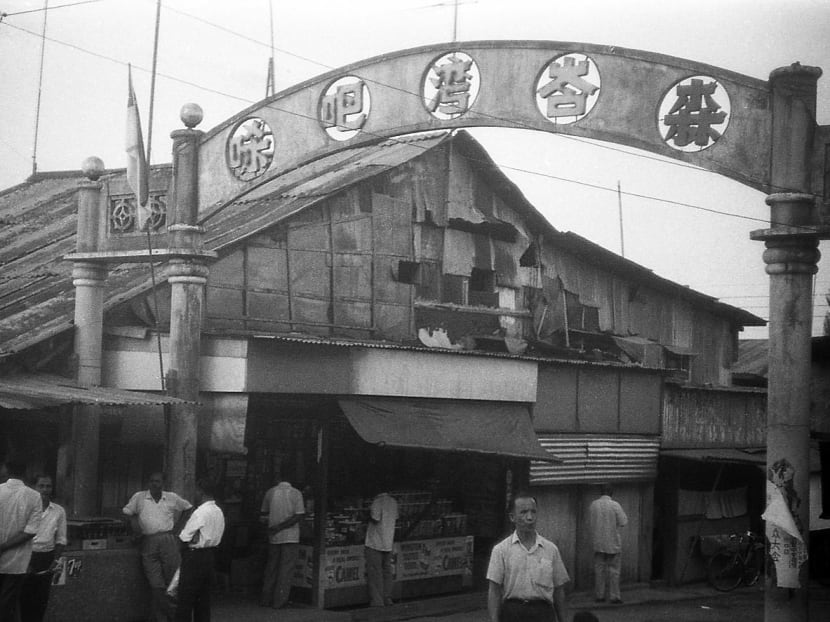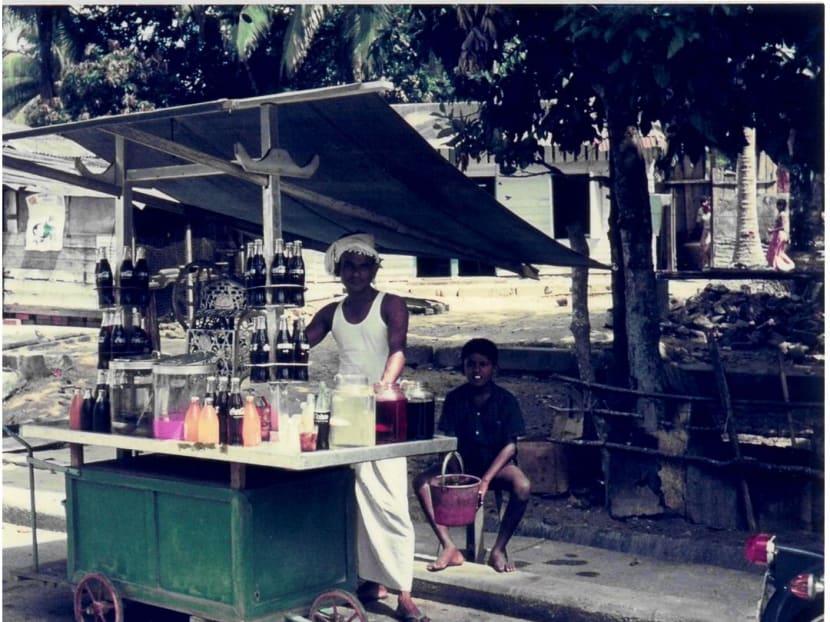Mother and daughter team up on novel that chronicles decades of life in Sembawang
SINGAPORE — Dipping her feet in the waters of Sembawang’s beach, boiling eggs at the hot springs, going for evening movies at Sultan Theatre in Chong Pang Village.

Author of Tamil language historical novel "Sembawang", Ms Kamaladevi Aravindan (right) and her daughter Dr Anitha Devi Pillai, (left) who translated the book into English.
- In 2015, Ms Kamaladevi Aravindan started writing a historical novel about residents in Sembawang
- She was inspired by her own experience of living in Sembawang as a newly-wed
- Her daughter, Dr Anitha Devi Pillai, then translated the book into English to reach a wider audience
SINGAPORE — Dipping her feet in the waters of Sembawang’s beach, boiling eggs at the hot springs, going for evening movies at Sultan Theatre in Chong Pang Village.
These are some early memories that local writer Ms Kamaladevi Aravindan has tried to capture in her latest novel “Sembawang”.
The author, who is known in literary circles for her short stories and plays in the Indian languages of Tamil and Malayalam, took three years to write the book in Tamil.
The solo effort then became a family project when her daughter Dr Anitha Devi Pillai, who is an applied linguist and teacher educator at the National Institute of Education, jumped in to translate it into English.
Both mother and daughter declined to reveal their ages.
The novel about the northern locale of Singapore is Ms Kamaladevi’s first stab at historical fiction in a career spanning 40 years.
It chronicles the life of a new Sembawang resident and all the people that she meets over five decades from the 1960s.
It is set against the backdrop of historical events in Singapore, such as the prisoner uprising in the penal colony of Pulau Senang in 1963 and a gruesome rape case which occurred at a maternal and child health clinic along Sembawang Road in 1968.

Dock workers from Singapore Naval Base in Sembawang returning home from work in 1966. Photo: Mr David Ayres via Dr Anitha Devi Pillai
Ms Kamaladevi, who moved from Malaysia to Sembawang in Singapore she was married in the 1970s, said that she had a “deep longing” to capture the beauty of the place she lived in.
This included huge houses styled after those in the South Indian state of Kerala, rambutan and durian plantations, and a simpler lifestyle where one could buy a prata for just five cents, reminisced Ms Kamaladevi in an interview with TODAY last Wednesday (Aug 5).
“It is quite amazing to think that we ever had these. So I thought why not bring out that history and landscape of Sembawang in a novel,” she said.
She set out to write the book in 2015, in an arduous process involving about 50 interviews with former Sembawang residents whom she either knew personally, or got to know through word-of-mouth.
Her oldest interviewee, she recounts, was a 93-year-old who still bears scars from being beaten up during the Japanese occupation.
In some cases, she had to rely on the children or grandchildren of her interviewees to assist as the memories of the older folks were failing.
But they were able to relate experiences not captured in research books, said Ms Kamaladevi.
For example, former residents told of how they lived in huge houses where the landlord would live in one room and rent the remaining 10 rooms to other families.
“The landlord’s wife would order the tenants about where they should brush their teeth or dry their clothes. These days, even mothers cannot order their children around like these ladies did,” quipped Ms Kamaladevi.

Sembawang Market in Chong Pang Village in 1966. Photo: Mr David Ayres via Dr Anitha Devi Pillai
Other experiences captured in the book involve housewives eagerly looking forward to Fridays, the payday of their husbands who worked at the Singapore Naval Base, which was set up by the British in Sembawang in 1938.
It was partly the nostalgia captured in the book that prompted her daughter, Dr Pillai, to offer to translate the book to English so that it could reach a wider audience.
“All my life (my mother) has been writing stories but this particular story was unique because it is about a place that my parents talk a lot about. There is a very strong sense of kinship between people in Sembawang,” said Dr Pillai, who grew up in Ang Mo Kio.

A drinks stall in 14 Mile Sembawang, date unknown. Photo: Ms Sofea Abdul Rahman and Mr Tony Dyer via Dr Anitha Devi Pillai
But to capture the Tamil nuances in the English translation, she first had to understand the backdrop and research behind the story, said Dr Pillai.
“I basically wanted to understand the book thoroughly before I translated it. I didn’t treat it as a line by line translation. I took months to understand it,” she said.
She took two years to do further research, including verifying the details of historical events and sourcing for old photos among former residents to visualise the locations mentioned in the book.
These details, such as photos, notes on historical events and a map of yesteryear Sembawang, are included in the translated version of the book, which will go on sale on Sept 7. The original Tamil version will be available for sale only later in the year.
Published by Marshall Cavendish, the English version of the book will be sold at a retail price of S$21.50 at all major bookstores. It is also currently available for pre-orders at e-commerce websites goguru.com and Amazon.








